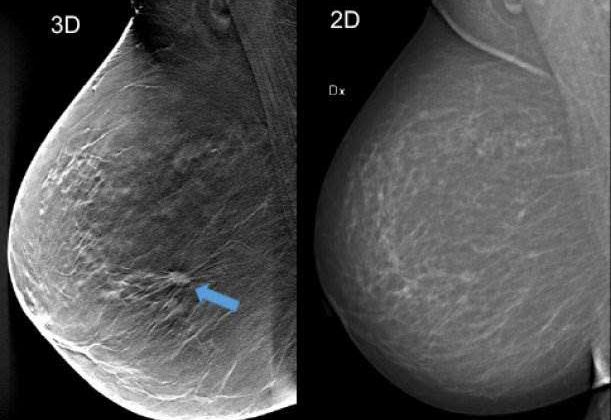Influenza or a cold? A new technology can help you
Smart gadgets in the home might soon be able to tell you what’s wrong with you. But the technology is good news for a lot of other things too.
Some people do such smart and difficult things that it’s hard to see what in the world they might have to do with you and me, so we just shrug them off. But that’s often the wrong response.
What if you had a simple gadget at home that could tell you why you’re feeling so lousy?
What if this gadget could within short order check whether you have COVID or the flu – or maybe it would even pick up that you have diabetes without knowing it? The device could figure all this out without you having to go to a doctor or a laboratory.
Stores the light better
This technology could become a reality within a few years, and electrical engineers are some of people who make it possible to create such gadgets, which contain a key component called the whispering gallery mode microresonator.
New technology is providing better optical sensors, which are important for electronics, including devices that analyse chemicals using light.
“We’ve built the lowest loss whispering gallery mode microresonator out there for the longwave infrared spectrum. Because the longwave infrared spectrum provides definitive information about chemicals, it provides new possibility for sensing applications,” says Dingding Ren, a researcher at the Norwegian University of Science and Technology’s (NTNU) Department of Electronic Systems.
We’ll talk more about what a microresonator is later in the article. But first back to Ren. He and his colleagues have developed a new whispering gallery mode microresonator – which can store light for certain wavelengths much longer in the resonance.
“Our microresonator is about 100 times better than what was available before for the longwave infrared spectrum,” says Ren.
“It can retain the light 100 times longer than previous versions, which amplifies the optical field inside and makes nonlinear processes much easier, such as frequency comb generation,” he said.
Opens up great opportunities
Storing light waves in the infrared part of the light spectrum more effectively is good news for several types of new technologies, especially for particle sensing and spectroscopic chemical identification that analyse a gas/fluid sample to check for viruses and bacteria and other nasties you might have.
The new microresonator means that scientists can develop broadband frequency combs in the longwave infrared spectrum using these devices. And just what might those be?
Frequency combs are laser lights whose spectrum consists of a series of discrete, equally spaced frequency lines. These can be found various places, such as in your GPS, in atomic clocks and in fibre optic equipment used in telephones and computers. The technology also opens the door to analysing several chemicals at once, if a broadband frequency comb is available at the longwave infrared spectrum.
“The technology is still in its initial stage when it comes to measurements in this the longwave infrared spectrum of light. But our improvement gives us the possibility to identify several different chemicals in real time in the near future,” says Ren.
This kind of spectroscopic machine already exists, like something called a Fourier-transform infrared interferometer, but they are so big and so expensive that only hospitals and big budget institutions can afford them. Other, slightly simpler machines might be able to analyse a few chemicals, but not many at once – unlike what the new technology could make possible.
Ren has worked closely with Professor David Burghoff and his colleagues at the University of Notre Dame in the USA.
“The competition is fierce in this field,” says Ren.
The new microresonator is made using the element germanium. The material may sound exotic, but was used in the world’s first transistor as early as 1947, before silicon took over that market.
We can compare the microresonator to what happens with the sound in the whispering gallery in St. Paul’s Cathedral in London.
Today, germanium is frequently used in optical lenses in sensors and infrared cameras, and it is consequently neither particularly rare nor expensive. These are also advantages when theory is going to be brought to the market.
What are microresonators anyway?
Microresonators, which a type of optical cavities, can store high optical field inside a very small volume. They can be made into a race track or disk geometry, but they usually are at a microscale dimension, similar to the thickness of a hair. Light travels inside the microresonator in circles, so the optical field gets amplified.
“We can compare the microresonator to what happens with the sound in the whispering gallery in St. Paul’s Cathedral in London,” says Ren.
This elliptical gallery has produced a famous phenomenon. You can whisper at one end of it and people at the other end of the room can hear you, even though they wouldn’t normally be to able hear you at that distance. The sound waves are amplified by the shape of the room and the walls, which is how light waves behave in the microresonator. You can read the research article if you want to try to understand this phenomenon better. The link can be found at the bottom of the article.
Funded by Fripro money
Ren is financing the research through a Fripro project grant from the Research Council of Norway, which lasts for three years. Money from Fripro is dedicated to basic research.
“We promised that we would develop a better microresonator, and we’ve succeeded,” Ren said. The research group delivered on its promise.
Stunning work
Bjørn-Ove Fimland and Astrid Aksnes, both professors in NTNU’s Department of Electronic Systems, have provided advice along the way.
“Ren has done excellent work, which is supported by the fact that he’s had an article published in Nature Communications,” says Aksnes.
The fact that we can now measure in the longwave IR range (8-14 µm, or micrometres) of the light spectrum opens up many possibilities in relation to use in imaging and detection, environmental monitoring and biomedical applications, says Aksnes.
“Many molecules have fundamental vibrational bands in the mid-wave IR range (2-20 µm), the so-called ‘molecular fingerprint region’. By measuring in this wave range, we achieve higher sensitivity,” she says.
_________________________________________________________________________________________________________________________________
Full bibliographic information
Reference: Ren, D., Dong, C., Addamane, S.J.et al.High-quality microresonators in the longwave infrared based on native germanium.Nat Commun13, 5727 (2022). https://doi.org/10.1038/s41467-022-32706-1
Published on 03/01/2023 The Norwegian University of Science and Technology (NTNU)
https://norwegianscitechnews.com/2022/12/influenza-or-a-cold-a-new-technology-can-help-you/





